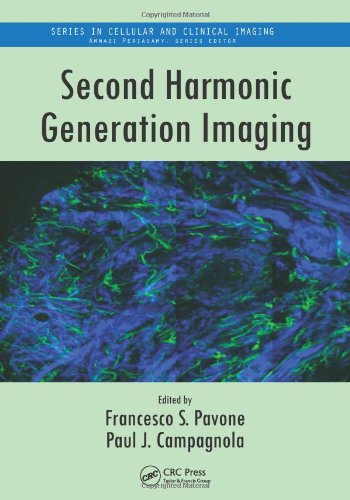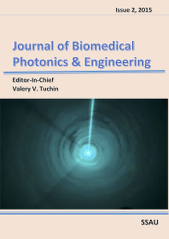Vol 1, No 3 (2015)
- Year: 2015
- Articles: 4
- URL: https://jbpe.ssau.ru/index.php/JBPE/issue/view/139
Articles
Malignant melanoma and basal cell carcinoma detection with 457 nm laser-induced fluorescence
Abstract
 180-185
180-185


Method of autofluorescence diagnostics of skin neoplasms in the near infrared region
Abstract
We propose a method for the diagnostics of skin neoplasms, based on the analysis of the changes in the autofluorescence spectra in the near infrared range. The autofluorescence was excited by means of the laser radiation with the wavelength 785 nm for ex vivo and in vivo studies with subsequent exponential approximation of its spectrum. The quantitative and qualitative criteria for the neoplasm type differentiation by the change of the curvature and the rate of decrease of the approximating curve are found. It is shown that the proposed approach allows the diagnostics of malignant melanomas with the accuracy of 88.4% for ex vivo studies, and 86.2 % for in vivo ones.
 186-192
186-192


Pulse wave digital processing and beat detection based on wavelet transform and adaptive thresholding
Abstract
This paper considers the adaptive algorithm for pulse wave processing in the presence of various physiological interferences, such as motion artefacts and baseline wander. The proposed processing technique consists of two main steps: comprehensive filtering of pulse wave based on wavelet transforms and noise-resistant pulse beats detection based on the set of pass-band filtering, nonlinear transforms and adaptive thresholding. To eliminate baseline wander from pulse wave signal we introduced a new algorithm based on the principles of adaptive noise cancellation, while the reference signal for adaptive filtering was generated by using multiresolution wavelet transform. For reducing motion artefacts and others high frequency distortions of pulse wave we suggested an approach based on soft thresholding of detailed coefficients from wavelet decomposition. The efficiency of the developed algorithm for pulse wave signal processing was assessed in comparison with the existing approaches by using mathematical modeling of pulse wave signal and occurred contaminations. The performance of the pulse beats detector was further verified for different recordings of clinical pulse wave signals from the Physionet database.
 193-200
193-200


Application of raman spectroscopy method to the diagnostics of caries development
Abstract
The object of study were human teeth with caries cavities and healthy teeth extracted for orthopaedic indications. The main method of study was Raman spectroscopy. We revealed the specific features of Raman spectra for the healthy tooth tissues impaired ones and the tissues affected by caries. The optical criteria are established that allow cares detection and assessment, as well as the detection of pre-caries impairment of the tooth tissues. The results were analysed in comparison with the data of the chemical analysis performed using a raster electron microscope.
 201-205
201-205











